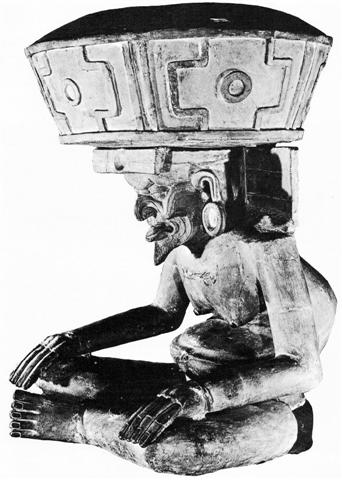Fornander:
"ELE, v. Haw., be dark, black; adj. dark-coloured, black, blue, dark-red, brown; ele-ele, id.
Tah., ere-ere, dark, black, blue. Rarot., kerekere, id. Marqu., kekee, id.; kee-voo, darkness, gloom.
The application of this word to colour is doubtless derivative from the Polynes. Haw. kele, mud, mire (quod vide), Tong. kèle-kere, earth, soil, dirt, Sam. 'ele and 'ele-ele, red earth, dirt, rust; elea, Tong., kelea, rusty, dirty; probably all akin to ala, ara, in ala-ea, earth, clay ...
Jav., iran, black. N. Celebes (Kema), hirun, id.
In the following Greek words the first constituent proclaims their affinity to the Polynesian ere, ele: -
ερεβος, darkness of the grave, the dark passage from earth to Hades; ερεβεννος, dark, gloomy; ερεμνος, sync. fr. previous word, black, swarthy; ερεφω, to cover; ορφνη, darkness of night; ορφνος, dark, dusty; οροφη, roof of a house.
Sanskr., aruņa, tawny, dark, red; s. the dawn, the sun; aruņita, made red.
Benfey refers the Sanskrit word to arus, a wound. Lidell and Scott refer the Greek words to ερεφω, to cover. They are plausible; but are they the true roots of stems, in view of the Polynesian ele, ere? Dr. J. Pickering, in his Greek Lexicon, derives ερεβος 'from ερα (the earth) or ερεφω (to cover)'. The former seems to me the better reference.
ELE², prefix. Haw., an intensitive added to many words, imparting a meaning of 'very much, greatly'; ele-u, alert, quick; ele-ma-kule, old, aged, helpless; ele-mio, tapering to a point; ele-ku, easily broken, very brittle; ele-hei, too short. Tah., ere-huru, encumbered, too much of a thing.
A. Pictet ... says, apropos of the derivation of the word Erin: 'L'irlandais er comme adjectif magnus, nobilis, paraît être identique à l'er intensitif de l'irlandais et du cymrique, considéré comme une particule inséparable, et qui serait ainsi proprement un adjectif. Il est à remarquer en confirmationm, que le zend airya = sanskr. arya avec l'acception de bon, juste, est également devny ér dans les composés du Pârsi, comme ér-maneshu, bon esprit, er-tan, bon corps (Spiegel, Avesta, i. 6). De là à un sens intensitif, transition était facile.'
Why not widen the philological horizon by admittning the Polynesian ere, ele, to consideration as well as the Irish, Welsh, or Parsi? And why may not the O. Norse ar, early, first; aerir, messengers; the Sax. er, before, in time, go up to the same root as those others?"












